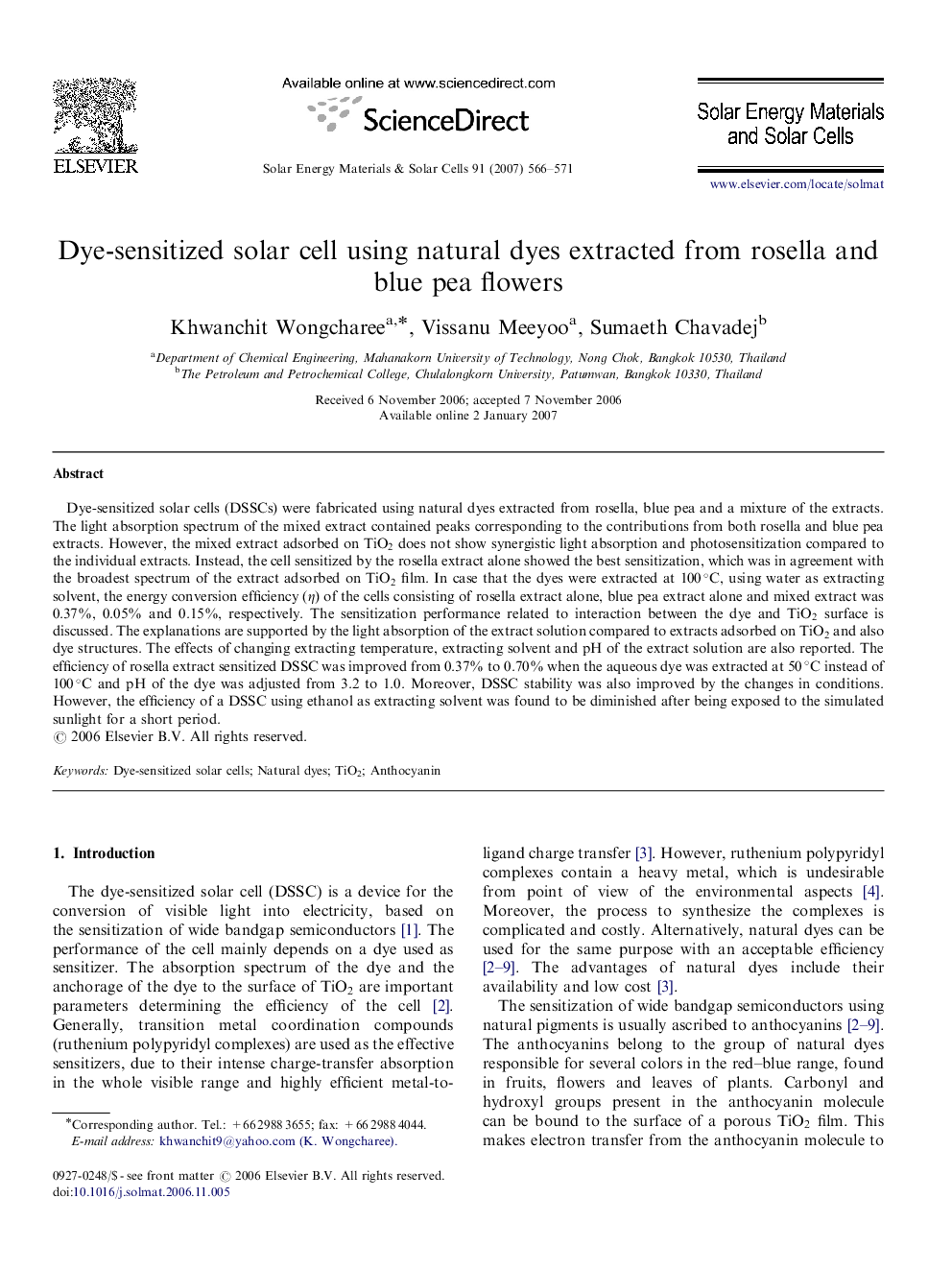| Article ID | Journal | Published Year | Pages | File Type |
|---|---|---|---|---|
| 80238 | Solar Energy Materials and Solar Cells | 2007 | 6 Pages |
Dye-sensitized solar cells (DSSCs) were fabricated using natural dyes extracted from rosella, blue pea and a mixture of the extracts. The light absorption spectrum of the mixed extract contained peaks corresponding to the contributions from both rosella and blue pea extracts. However, the mixed extract adsorbed on TiO2TiO2 does not show synergistic light absorption and photosensitization compared to the individual extracts. Instead, the cell sensitized by the rosella extract alone showed the best sensitization, which was in agreement with the broadest spectrum of the extract adsorbed on TiO2TiO2 film. In case that the dyes were extracted at 100∘C, using water as extracting solvent, the energy conversion efficiency (η)η) of the cells consisting of rosella extract alone, blue pea extract alone and mixed extract was 0.37%, 0.05% and 0.15%, respectively. The sensitization performance related to interaction between the dye and TiO2TiO2 surface is discussed. The explanations are supported by the light absorption of the extract solution compared to extracts adsorbed on TiO2TiO2 and also dye structures. The effects of changing extracting temperature, extracting solvent and pH of the extract solution are also reported. The efficiency of rosella extract sensitized DSSC was improved from 0.37% to 0.70% when the aqueous dye was extracted at 50∘C instead of 100∘C and pH of the dye was adjusted from 3.2 to 1.0. Moreover, DSSC stability was also improved by the changes in conditions. However, the efficiency of a DSSC using ethanol as extracting solvent was found to be diminished after being exposed to the simulated sunlight for a short period.
